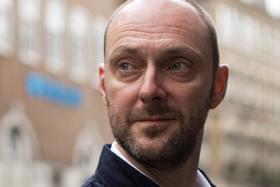The secret of success is the ability to understand and present the history and next chapter of a proposed scheme as a compelling story. This should persuade clients to adopt your idea, says Martyn Evans

At the beginning of December I spent a morning doing crits with MA students at the Bartlett. It was my second visit to hear presentations from first-term students, all new to London. They presented the results of research projects into three areas of the city undergoing enormous change: Shoreditch, Clerkenwell and Soho. What they were practising was the ability to understand a place, uncover its history, dissect its present and show a glimpse of its future. What they were doing was learning how to tell a story.
Even though some of them, very new to the UK, struggled with their English, their commitment to understanding the places they had chosen and the clarity of their ideas was a real pleasure to experience – particularly the trio of Julen Aguinagalde, Tina Reichenbach and Tasos Theodorakakis who tackled Soho. What I hoped, as I listened to them talk, was that as they worked their way into jobs in practices around the world where the luxuries of time and resource are often limited, their enthusiasm for storytelling wouldn’t be dulled.
Storytelling for architects is a skill. It’s something that can be learned. What it’s not is an add-on that simply frames a presentation
Architects often complain to me that the hardest job they have is to persuade clients to take risk; to do something they hadn’t previously considered. What this argument misses is an understanding of the basic human appeal of a thunderingly good story – a story that captivates the listener. It’s something architects should be masterful at but often are too introspective to recognise. One well-known UK architect said to me this week, “Architects labour under the misapprehension that they have to explain design to their clients when what they really need to do is explain how their design will work.”
I ran a competition a few years ago for a reasonably large scheme in a regional UK city. There were four practices on the pitch list and all four presentations had exactly the same first section – the history bit. They’d found the same historic pictures on Google and they presented similar analysis of the site’s development over the previous 300 years. Then came the interesting bit. How that information was to be used to carry on with Chapter Two of the story – what to build now? Three of them presented the schemes they wanted to build – schemes that could have been anywhere. Only one of them presented a scheme that carried the story forward, kept the same characters, the same language and a perfectly believable arc to end the tale with a punchy and exciting finish. It was a great story, a ripping yarn, an enchanting tale that had us all eating out of the palm of their hands. I don’t have to tell you who got the job.
To design beautiful, sustainable, valuable places and then have your clients to come with you, then have to seduce them. Tell them a story so compelling they will be eating out of your hand
Storytelling for architects is a skill. It’s something that can be learned. What it’s not is an add-on that simply frames a presentation. It’s the very heart of a project and the basis on which everything else should be built. It’s about explaining what a place will be, who will live and work there and why? What is there in the past to mitigate the risk of predicting the future? Who wants to be there, or, more likely, who will want to be there – they just don’t know it yet?
An average presentation training skills course will teach you how to stand, breathe and make eye contact with your audience. A good one will teach you how to research, construct, write and tell a story first. Writing a good story is 80% of the job; telling it is the rest.
To design beautiful, sustainable, valuable places and then have your clients come with you, you have to seduce them. Tell them a story so compelling they will be eating out of your hand. Make the story so believable that there is no alternative. Write the chapter on the costs and value as beautifully as all the other chapters. Use the history to explain the present and unlock a successful future. Show how your proposal is the natural conclusion and leave no room for doubt.
The end.
















No comments yet